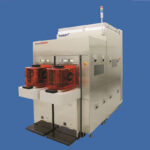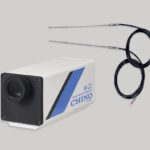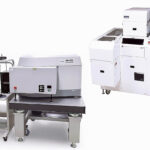ASIA ELECTRONICS INDUSTRYYOUR WINDOW TO SMART MANUFACTURING
Unique Film Technology Promotes Efficient Production
Flat panel displays that use anti-reflection (AR) films to enhance display definition have taken the spotlight at the recent 12th FILMTECH JAPAN (Highly-functional Film Expo) held last month at Makuhari Messe in Japan’s Chiba Prefecture. In addition to this, touch panels employing antifouling films to prevent surface contamination were also popular at the said event.
This article discusses Hitachi Zosen Corporation’s products as manufacturing equipment related to these high-functional films.
AR, AFP FILMs Integrated Deposition System
Characteristics of AR, AFP films integrated deposition system
Hitachi Zosen offers the HARD-F Series roll-to-roll (RtoR) integrated deposition system for anti-reflection (AR) and anti-fingerprint (AFP) films for film substrates. Displays of digital terminals and various instrument panels usually require coated films using the HARD-F Series.
They improve reflection prevention, water repellent, and fouling, such as fingerprints, prevention effects. The integrated system with two functions improves durability and stainproof performance, realizes compact manufacturing lines, and reduces manufacturing time and costs.
A main feature of the HARD-F Series is continuous deposition on film substrates. Correspondingly, it deposits AR and AFP films continuously on film substrates and can laminate the completed film substrates onto base materials of various shapes. It also features improved durability and stainproof performance compared with conventional equipment.
It adopts the sputtering method for AR films and the inline vapor deposition method transformed from the surface vapor deposition method for AFP films. Consequently, Hitachi Zosen has originally developed both methods.
As a result, the HARD-F Series has more than doubled stain repellent durability compared with conventional equipment.
It also enables efficient manufacturing lines. Conventional equipment required a drying process, resulting in manufacturing lines of about 20m long. The HARD-F Series reduces manufacturing lines to 10m or shorter as it has integrated two machines into a single machine and adopts the vapor deposition system, which does not need the drying process. Furthermore, it also reduces the manufacturing time. Conventionally, AFP films required the wet process and the dry process. However, the HARD-F Series adopts the inline vapor deposition method for AFP films, realizing a compact design. Also, it has reduced the manufacturing time to two-third of conventional equipment by eliminating the drying time, which required a long time.
Outline of HARD-F RtoR system
HARD-F RtoR system continuously deposits AR and AFP films on flexible substrates. It is provided with a differential pressure regulating mechanism and can continuously deposit films in sputtering and vacuum deposition processes with different degrees of vacuum.
It adopts a proprietarily designed rotary cathode and can operate long hours and conducts high-power deposition of AR films.
It also adopts a proprietarily designed nozzle-type linear source. At the same time, it is capable of depositing AFP films with highly uniform thickness at high material utilization efficiency.
It also adopts a proprietarily designed valve mechanism for AFP films, and maintains a stable vapor deposition rate, shuts off the valve in the non-vapor deposition mode, and enables changeover of materials during vapor deposition. It enables vapor deposition of liquid materials. Fig. 1 shows the structure and specifications of the HARD-F RtoR system.
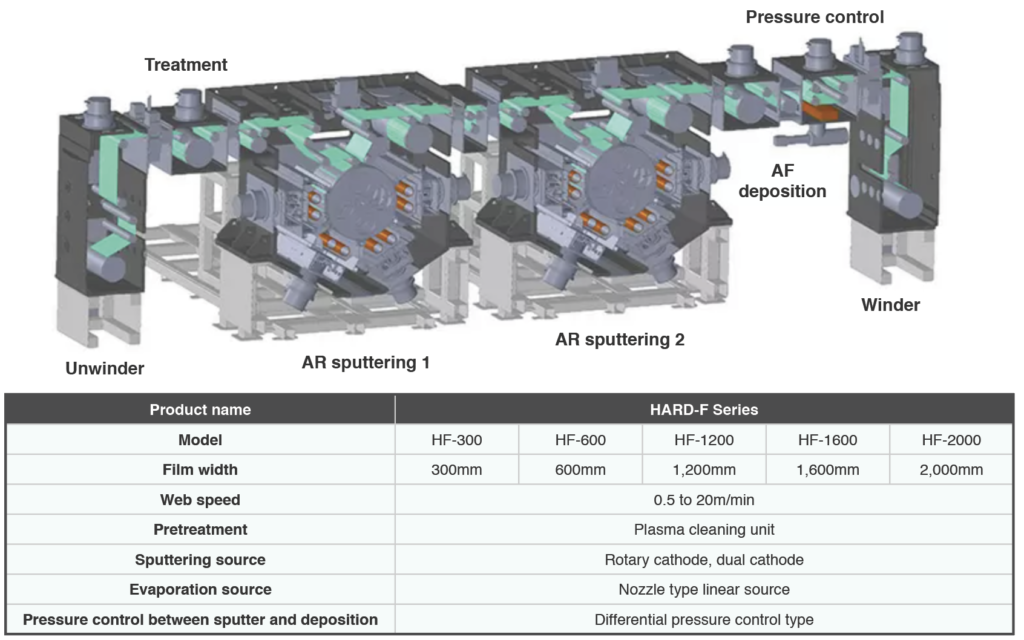
Outline of HARD-G batch-type system
The HARD-G batch-type system adopts the vertical rotatable drum. It deposits AR and AFP films onto glass substrates and plastic substrates in a vacuum state. It is equipped with sputtering source and evaporation source that use common technologies with those of the HARD-F RtoR system.
It supports various substrates, including long substrates and curved substrates. It accommodates deposition in a wide wavelength range and enables flexible production of small-lot and many varieties of products.
As options, it can incorporate load lock mechanism and automatic substrate setting.
Fig. 2 shows the structure and specifications of the HARD-G batch-type system.
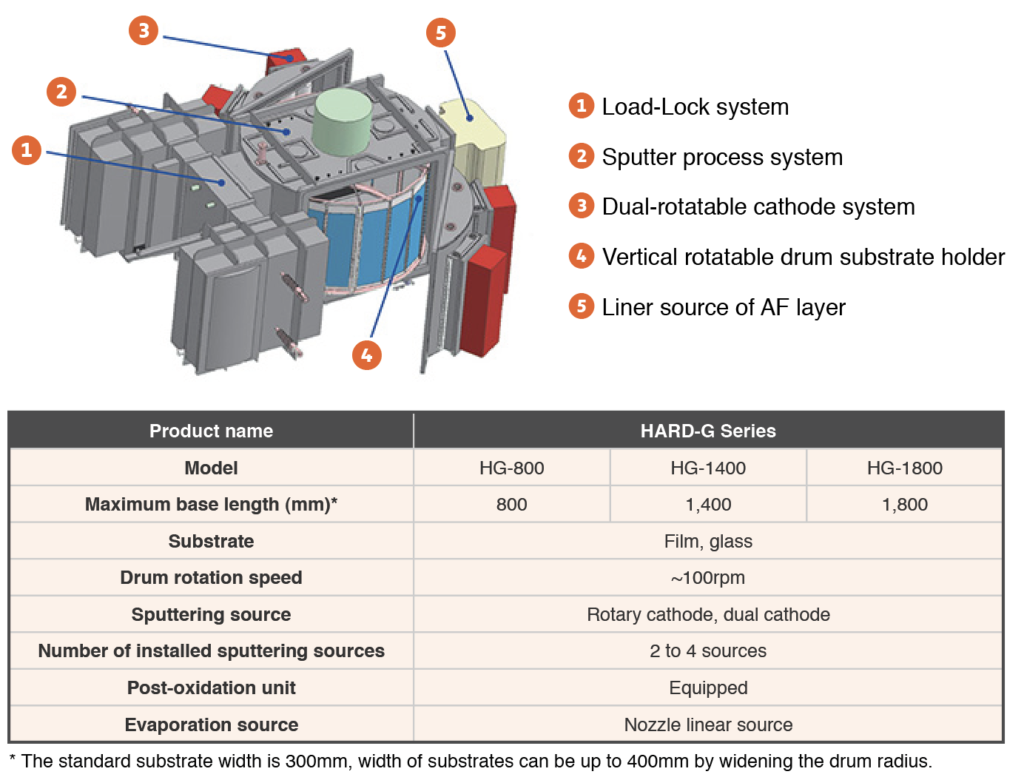
Rotary Cathode Sputter for AR Film Deposition
Fig. 3 shows the exterior view of the rotary cathode. Rotary cathode sputter improves efficiency and increases the life of target materials. It features high-speed sputtering of AR films, and longer life (1→5 years) through strengthened vacuum seal. Also, it achieves large flow rate of cooling water required for high-speed sputtering (100ℓ/min).
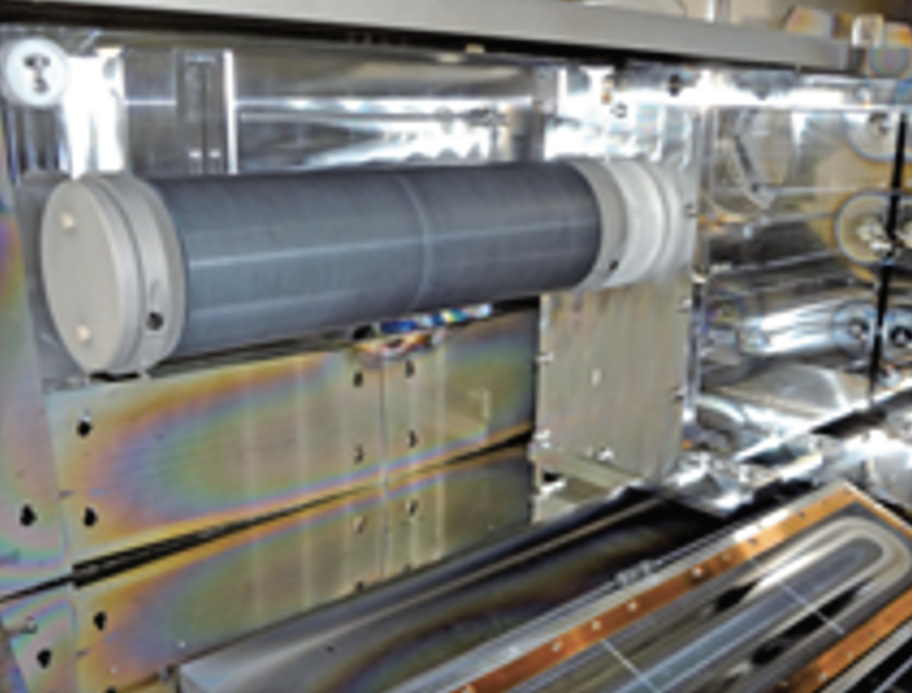
Meanwhile, AR film is a coating designed to prevent the glare and reflection of light. Fig. 4 shows a comparison of reflectance between glass substrates with and without AR films. Fig. 5 shows an example of the reduction of reflectance through use of AR films.
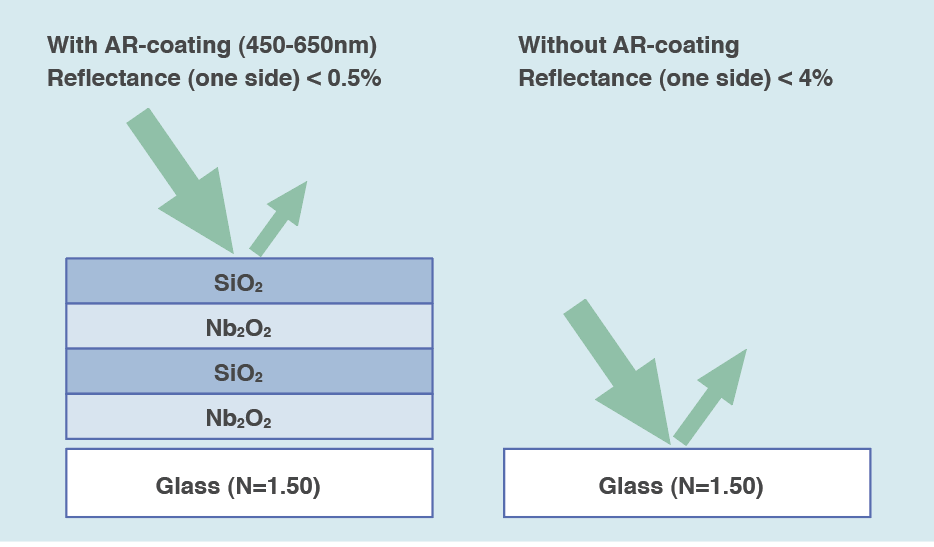
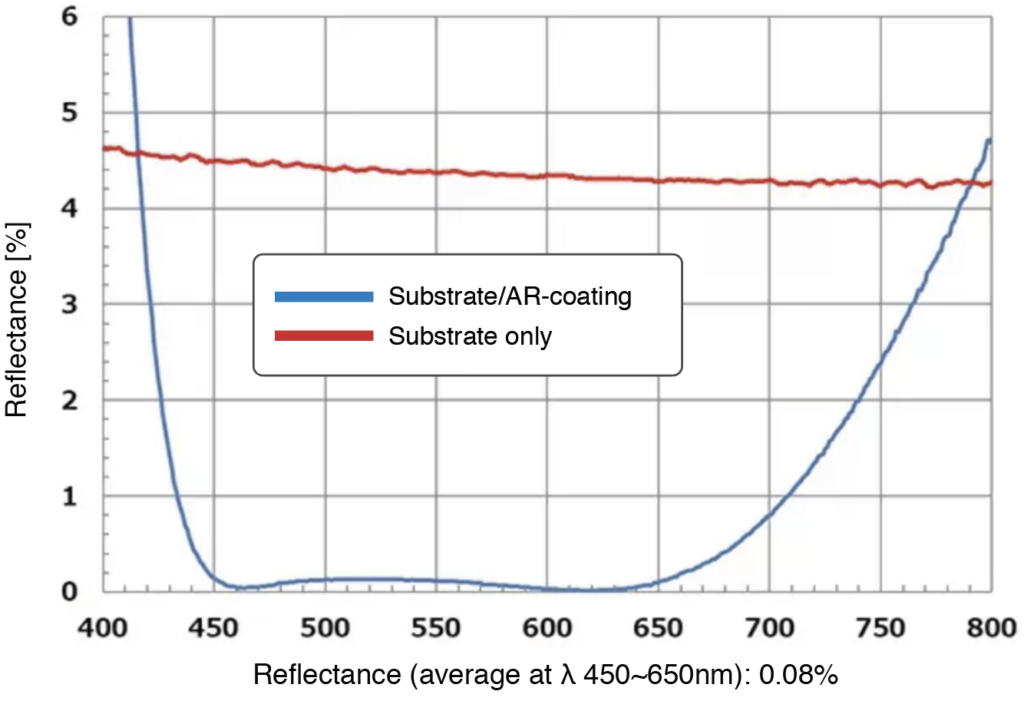
AFP Films, Antifouling Films Formed by Nozzle-Type Linear Source
AFP film is a coating designed to prevent fingerprints from sticking and make it easier to wipe off fingerprints. In general, it is applied on top of AR film.
The outermost surfaces of displays with touch panels need to be free from hard stands of fingerprints and dirt and users can easily wipe the stains. Furthermore, the displays also need to be resistant from hard scratches even under frequent use.
Fig. 6 shows the exterior view of a nozzle-type linear source. Nozzle-type linear source features high design freedom and chooses no deposition direction.
In addition, the linear source can evaporate liquid materials. In short, it achieves film quality superior to wet coating (Fig. 7) and eliminates the need for the drying process in wet coating. It can also connect with existing AR film deposition system.

Fig. 7 shows a comparison between evaporation and wet coating. Furthermore, it shows evaporation has less changes in contact angle in accordance with friction times. Fig. 8 shows a comparison of sliding characteristics between Hitachi Zosen’s deposition film and other companies’ deposition films. Correspondingly, it shows Hitachi Zosen’s deposition film exhibits superior dirt preventing function compared with other companies’ deposition films.
As described above, the conventional wet coating method could not exhibit sufficient dirt-prevention function. In contrast, the outermost surface (anti-staining layer) formed by the vacuum vapor deposition method exhibits high sliding durability and maintains stain-proofing function for a long period of time. In addition, it can maintain high productivity in the RtoR process.
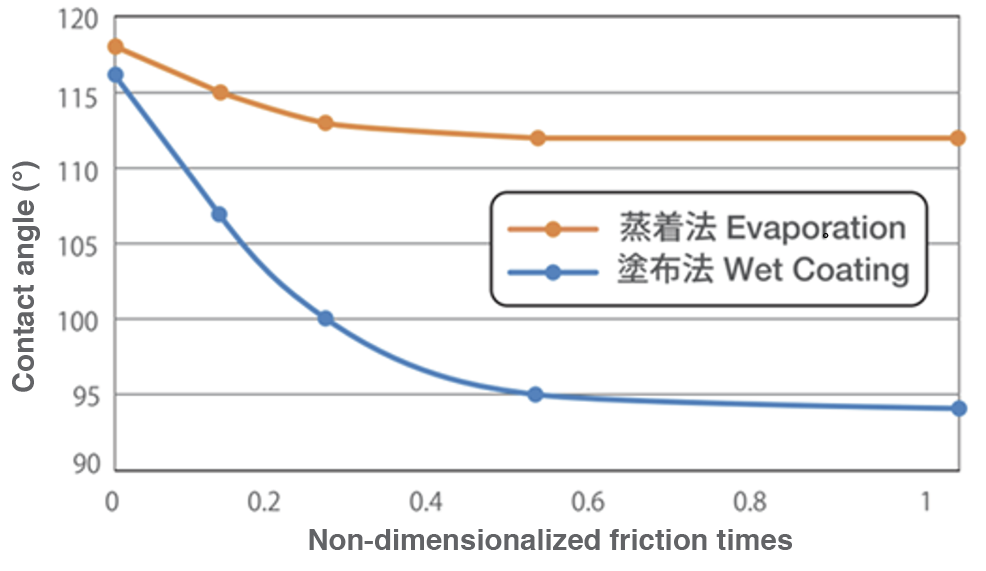
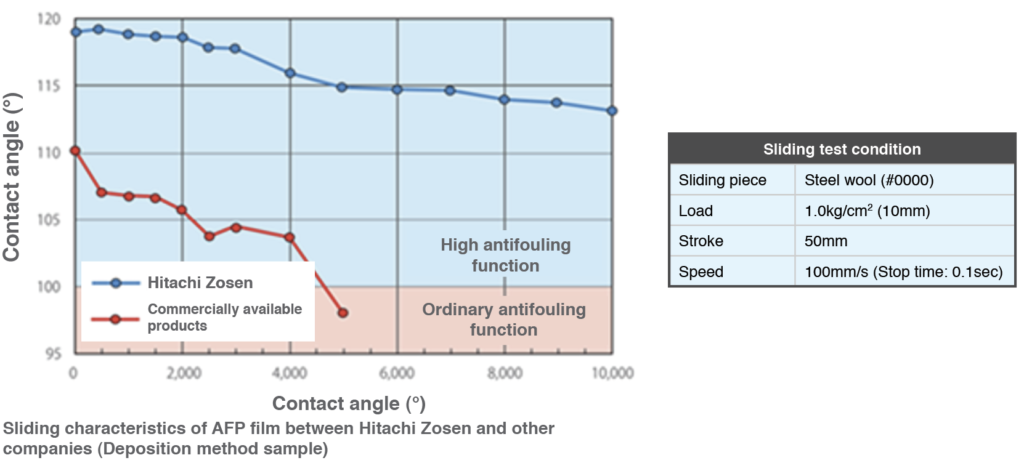
Air to Vacuum Continuous Transfer RtoR Deposition System
In film transportation of RtoR system, vacuum differential pressure adjustment mechanism enables the connection of the vacuum and air processes. It also realizes continuous arrangement of deposition systems through continuous transportation of films between chambers with pressure differences, thereby enhancing productivity.
The air to vacuum continuous transfer RtoR deposition system retains differential pressure among chambers during the transportation of films. It is capable of transporting films without contact with the film deposition surface. It features continuous film transportation from air to vacuum.
Fig. 9 shows a conceptual diagram of the air to vacuum continuous transportation system, and Fig. 10 shows specifications of an experimental system.
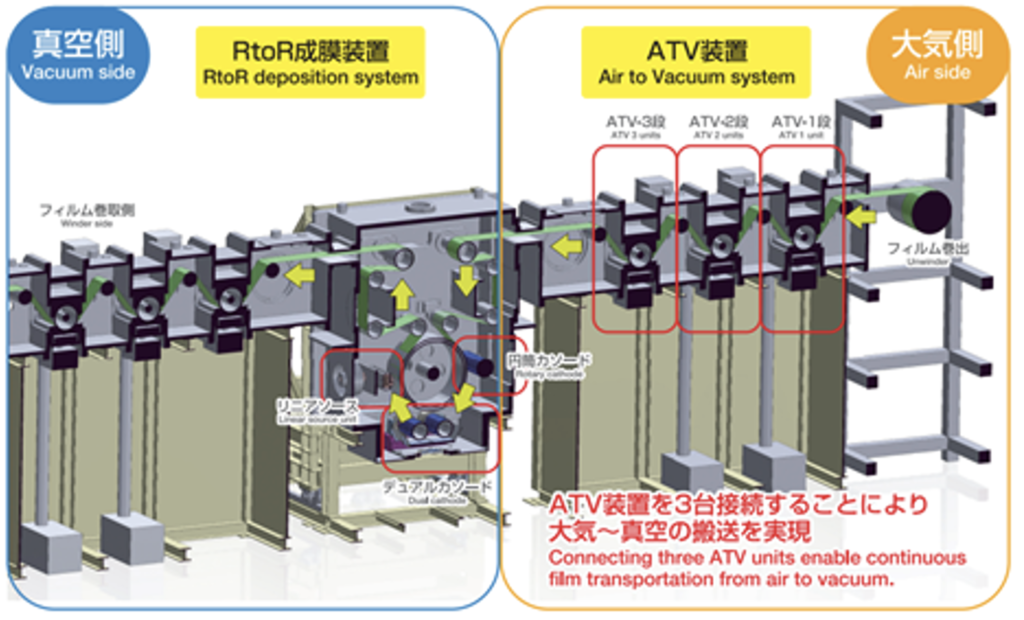

About This Article:
The author, Yasuhiro Ukai, Ph.D., is from Ukai Display Device Institute (UDDI).

